New benchmark tests show that Intel's new Iris integrated graphics chip can push pixels for Apple's latest laptops between 40 and 60 percent faster than its predecessor.
Cinebench r15's OpenGL benchmark clocked frame rates 45 to 50 percent higher than the previous MacBook Pro generation, while Unigen's Heaven benchmark notched a 65 percent improvement on Apple's latest hardware, reports Macworld. The publication compared results from a 13-inch 2.6-gigahertz Haswell-equipped Retina MacBook Pro against those from an early 2013 vintage 2.6-gigahertz Ivy Bridge edition.
CPU performance also increased, gaining eight percent in Wolfram Research's MathematicaMark 9 test, while Cinebench's CPU exam edged up by five percent.
Surprisingly, the Haswell-based notebooks did not exclusively show what were expected to be significant gains from their new PCIe-based flash storage. Though intra-disk file copy operations were 33 percent faster on the newest high-end model's 256-gigabyte drive, the 128-gigabyte version came in level with its Ivy Bridge sibling.
Additional storage tests using a disk benchmarking tool from Blackmagic returned mixed results.
Early benchmark results from popular test suite Geekbench, which does not include GPU performance in its scoring system, matched the results from Macworld's testing. Most models showed modest two to four percent gains on CPU and memory tests, with high end models notching up to eight percent improvements.
The new Haswell-based Retina MacBook Pros bring more than just performance increases to the market. Combined with the latest rendition of Apple's desktop operating system, OS X Mavericks, the updated models boast battery life of up to nine hours, an improvement of two hours over their previous maximum.
Readers in the market for a new MacBook Pro can use AppleInsider's Mac Price Guides to get the lowest prices anywhere for these new models both with 3-Years of AppleCare or with-out AppleCare.
 Shane Cole
Shane Cole
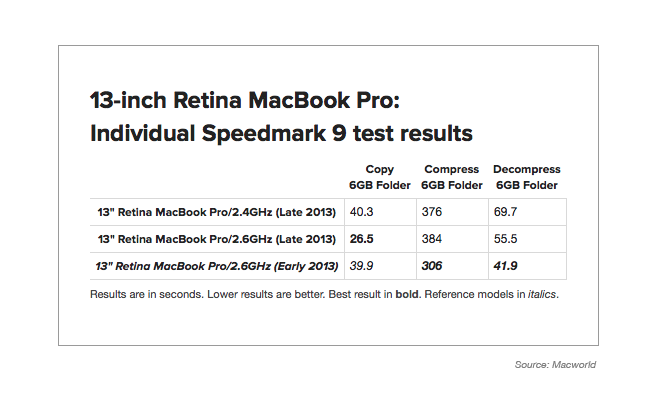


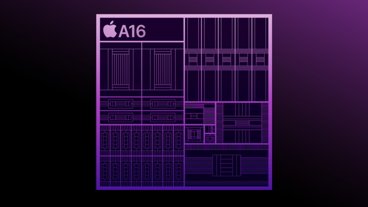
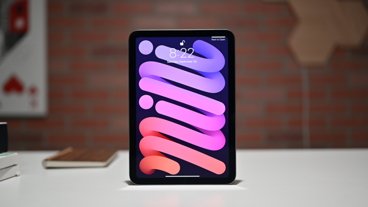




 Andrew Orr
Andrew Orr
 William Gallagher and Mike Wuerthele
William Gallagher and Mike Wuerthele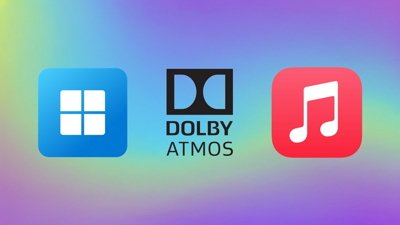
 Amber Neely
Amber Neely
 Mike Wuerthele
Mike Wuerthele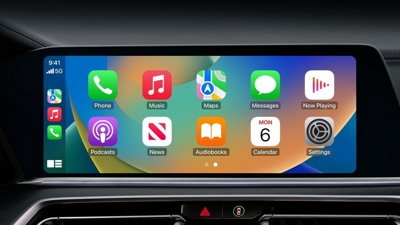
 William Gallagher
William Gallagher




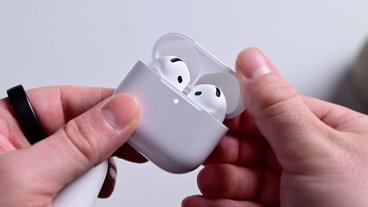





100 Comments
What about the 15 inch lacking its discrete graphics on bottom end, what if they did the test for both in comparison? I really like how CPU and gpu have seperate rams in the past.
While they did improve GPU performance on the low end, the only option they have with a discrete GPU is very expensive.
Since I like to play games, the new line of laptop from Apple are too expensive for me. Maybe it will be better later on, but even the Iris Pro GPU is very low end in terms of GPU performance. Those laptops are good as long as you dont plan to play games on them.
Apple usually doesn't fudge numbers, but it seems clear the 90% boost for the 13" was a bit much to claim. The Iris Pro 5200 in the 15" is also a tad slower than the old 650M default, especially when you start cranking the resolution/filtering/details as it seems bandwidth constrained. [IMG ALT=""]http://forums.appleinsider.com/content/type/61/id/34055/width/350/height/700[/IMG] [IMG ALT=""]http://forums.appleinsider.com/content/type/61/id/34056/width/350/height/700[/IMG]
To be clear, that is only the 13" gaining 2 hours, while the 15" gains only 1. Either is a very small increase when considering all the advantages such as lower clock speeds, Haswell, and Mavericks. Air 13" went from 7 hours to 12 hours on Haswell alone, then another hour on Mavericks. That's 6 hours additional battery life compared to 1 or 2 hours on the 13" and 15". Just seems disproportionate.
It's really too bad those rumours that Intel might have designed a custom chip for Apple didn't pan out, since something like a dual core Crystalwell with even just 32 MB of eDRAM would have really helped graphics on the 13" MacBook Pro. I guess it'll have to wait for Broadwell to shrink things down and make it viable.